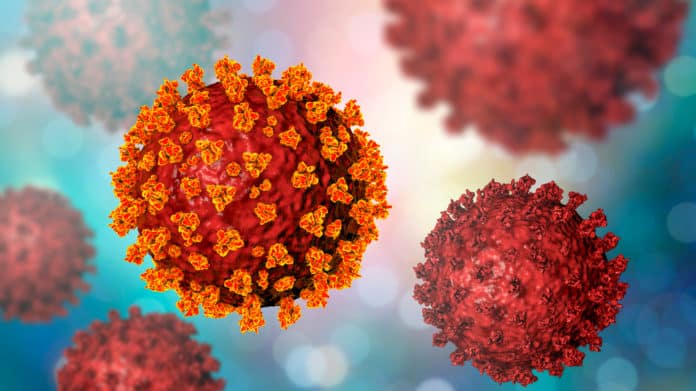Neuropilin-1 Facilitates SARS-CoV-2 Infectivity
The reason behind the SARS-CoV-2 virus’s high infectivity and ability to transmit quickly in human cells has been identified in a major breakthrough by researchers led by the University of Bristol with an international team of scientists. The researchers demonstrated a possible anti-viral treatment, wherein they described in the journal Science how a newly identified interaction between the virus and host could be blocked by inhibitors which can reduce the ability of the virus to infect human cells.
The causative agent of COVID-19, SARS-CoV-2 virus is highly infective and transmissive unlike other common cold-causing or mild respiratory symptoms causing coronaviruses. The reason for the COVID-19 causing virus to infect organs outside of the respiratory system like the heart and brain has remained unknown until now.
First, the SARS-CoV-2 virus should latch on to the surface of human cells that line the intestinal or respiratory tracts, which is done by a viral protein, known as the ‘Spike’ protein, in order to infect humans. The virus then invades the cells and multiples several copies of itself once it is attached. Then, the transmission of SARS-CoV-2 is caused when the replicated viruses are released.
In this breakthrough study, multiple approaches were used to discover that a protein called neuropilin-1 on the surface of human cells is recognized by the SARS-CoV-2 virus in order to facilitate viral infection by the Bristol’s Faculty of Life Sciences research groups, Professor Peter Cullen from the School of Biochemistry; from the School of Cellular and Molecular Medicine, virologist and associate professor, Dr. Yohei Yamauchi; and a senior researcher in the Cullen Lab, Dr. Boris Simonetti.
They described that they came across the presence of a small sequence of amino acids that occurred to mimic a protein sequence found in human proteins which interact with neuropilin-1 while looking at the sequence of the SARS-CoV-2 Spike protein and proposed a simple theory: to enhance viral infection of human cells, can the SARS-CoV-2’s Spike protein connect with neuropilin-1? They were able to indicate that the Spike protein of SARS-CoV-2 does indeed bind to neuropilin-1 by using a range of biochemical and structural approaches.
The researchers were able to demonstrate that in human cells grown in cell culture, the interaction helps in enhancing the invasion of SARS-CoV-2, once they had established that the Spike protein bound to neuropilin-1. They were also able to reduce SARS-CoV-2’s ability to infect human cells by using monoclonal antibodies, proteins created in the lab resembling naturally occurring antibodies, or a selective drug that blocks the interaction.
Additionally, it was found that neuropilin-1 facilitates SARS-CoV-2 cell entry and infectivity separately by researchers at the University of Helsinki, Finland, and the Technical University of Munich, Germany.
Overall, the scientists concluded that in order to curb the current COVID-19 pandemic, a previously unrecognized avenue for anti-viral therapies is provided by their discovery of the binding of the SARS-CoV-2 Spike to neuropilin-1 and how crucial it is for viral infectivity.
Funding for the study was provided by grants from the European Research Council, Swiss National Science Foundation, Elizabeth Blackwell Institute, Lister Institute of Preventive Medicine, Wellcome Trust, and MRC.



